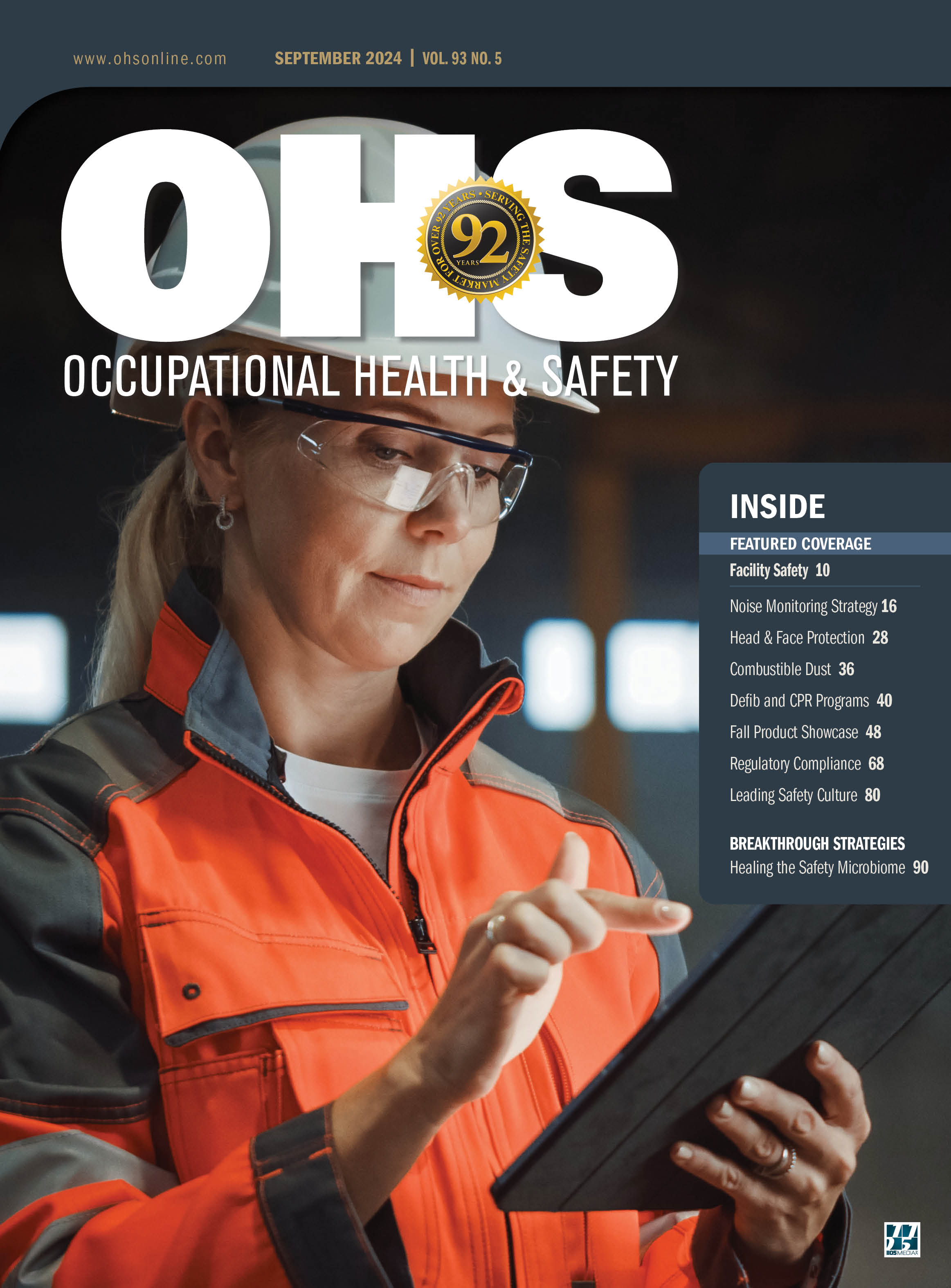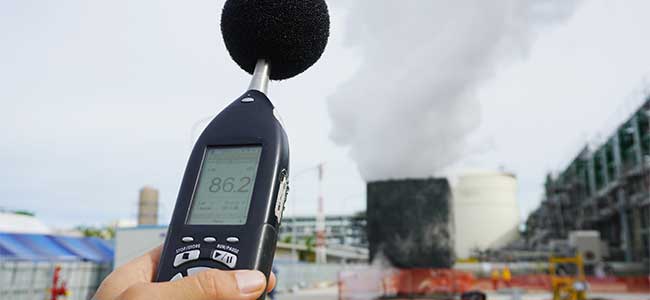
September 2024
Find these topics and more in the September issue:
- Facility Safety
- NSC Safety Congress & Expo
- Noise Monitoring
- PPE: Construction
- PPE: Foot Protection
- PPE: Head & Face Protection
- Training: Incentives
- Combustible Dust
- Defibrillation & CPR
- Slips, Trips and Falls
- Hazcom
- Electrical Safety
- Software Solutions
- Fall Protection
- Regulatory Compliance
- Incident Investigations
- Heat Stress
- Safety Culture
CLICK HERE TO SUBSCRIBE.
Cover Story

By Aaron Freund
New technology continues to raise the bar on behalf of safety.
Features

By Jill James
Building relationships and understanding the needs of decision-makers are essential for effectively gaining leadership buy-in for safety software solutions.

By
OSHA's Hazard Communication and Laboratory Standards outlines their differences, similarities and how to effectively comply with both.

By Tim Turney
Effective noise monitoring and control measures in the workplace are crucial to preventing noise-induced hearing loss and ensuring employee safety.

By Ben Julian
What types are available? What are their differences?

By Philip Jacklin
Confined spaces present unique fall hazards, but these risks can be mitigated through proper assessment, effective fall protection solutions, and thorough training.

By Ian Durrant
Implementing and maintaining robust CPR and defibrillation programs in the workplace are critical to enhancing emergency preparedness and saving lives.

By Dan Ankney
Proactively identifying and addressing the causes of slips, trips, and falls reduces injuries, prevents financial losses and fosters a culture of safety.

By Buck Peavey
Implementing safety incentive programs can significantly improve compliance with fall protection standards and strengthen overall workplace safety culture.

By Greg Zigulis
Facility safety programs are essential for identifying, managing and mitigating various hazards, ensuring compliance and integrating safety into broader management processes.

By Martin Bermudez
Maintaining a legal registry helps businesses manage regulatory compliance and enhance credibility, especially when operating across multiple jurisdictions.

By Todd Willey
Effective dust collection and explosion protection strategies are essential for maintaining safety and preventing catastrophic incidents in industrial facilities.

By Dennis Capizzi
What to know about head protection types, classes, accessories, and more.

By Taylor Thorn
A mobile-first safety strategy significantly enhances worker safety, compliance and operational efficiency in the electrical industry by empowering workers and enabling real-time safety management.

By Ben Lzicar
How helmet solutions help meet OSHA's new regulations and protect workers from heat-related illnesses

By Matt Marrapode
Personalized hydration protocols, informed by sports science, are essential for preventing heat stress and ensuring the safety and performance of industrial workers exposed to extreme heat.

By Andrew J. Goodwin
Leadership plays a crucial role in establishing and maintaining a strong safety culture, fostering trust, motivation and emotional intelligence as well as addressing toxic behaviors to ensure a safe and healthy work environment.

By Carla L. MacLean, Surveer Boparai
The influence of an information source's identity can significantly bias occupational health and safety investigators' judgments.
Departments
By David Kopf
A construction safety awareness campaign could reduce electrical fatalities.